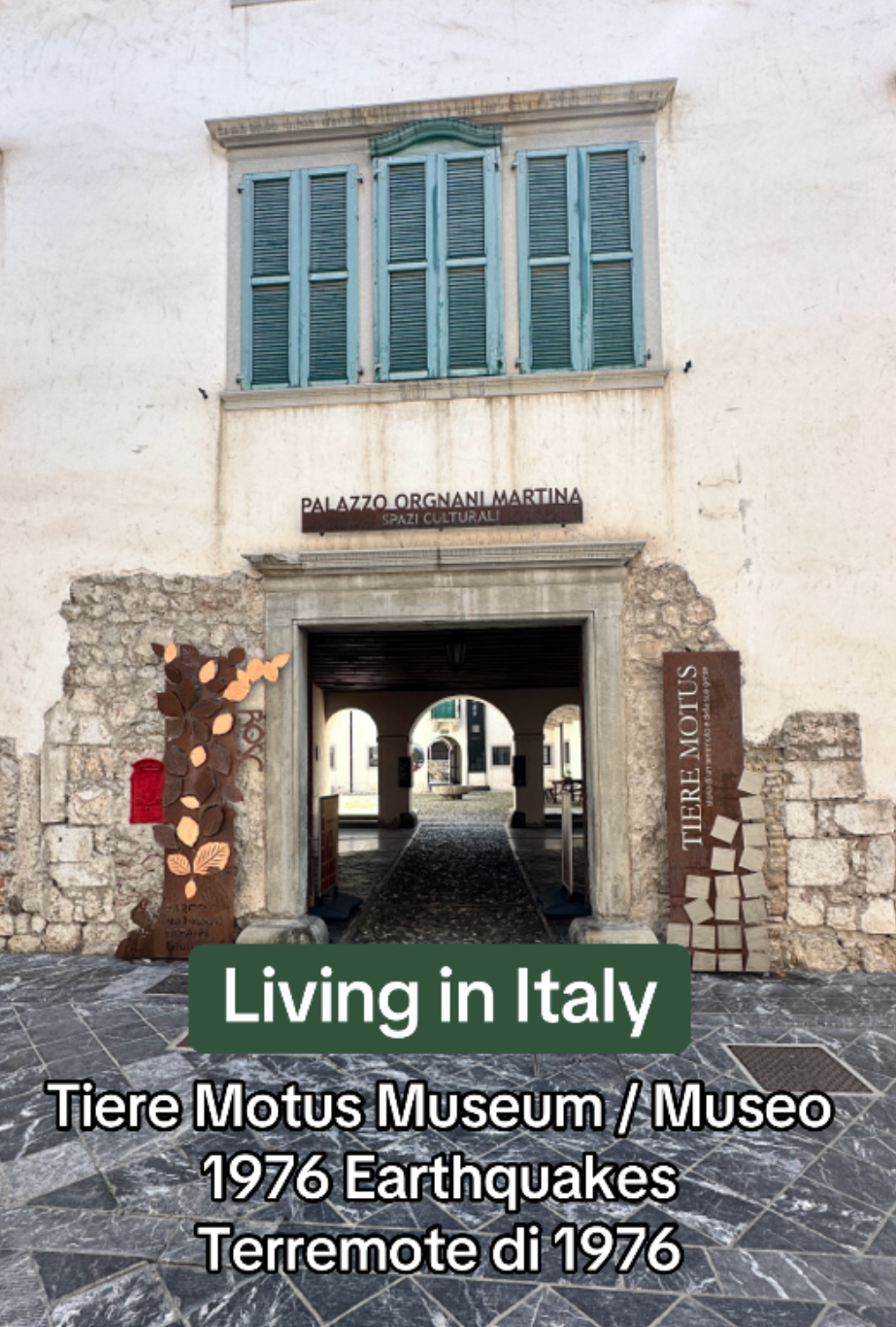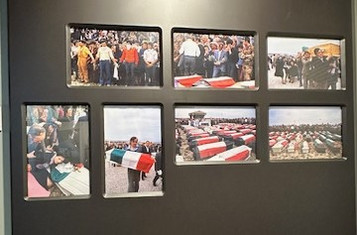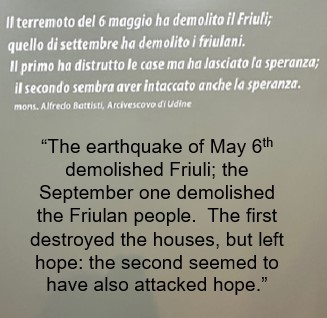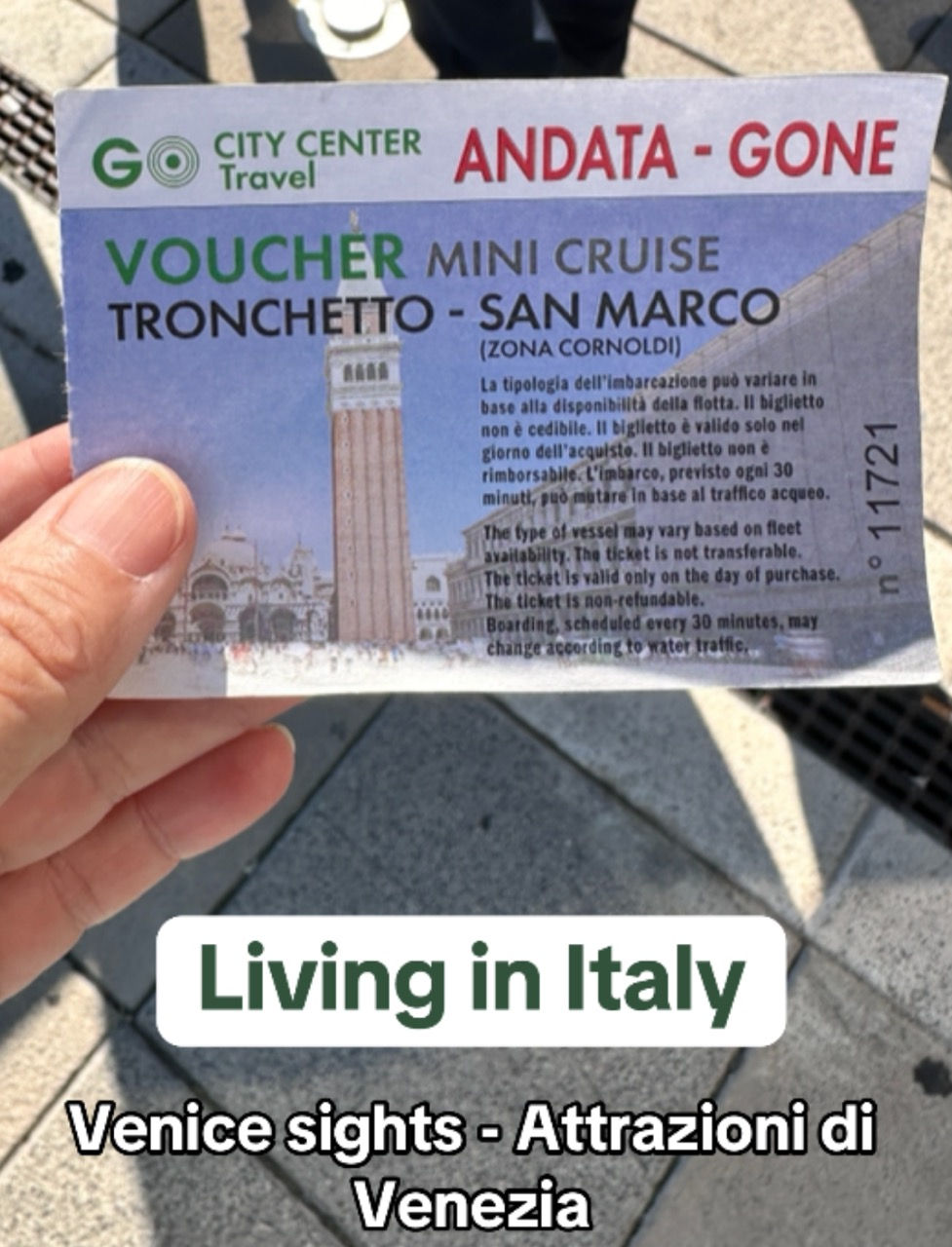Friuli Earthquakes of 1976 – Terremoti del Friuli del 1976
- Maria Scuor
- Sep 16, 2024
- 8 min read
Scorri a basso per l”Italiano
While in Venzone, we visited the Tiere Motus Museum. It is an amazing place to walk through the history of what happened during the Friuli earthquakes. I used much of the information from the books I purchased and their WEBSITE. “Tiere Motus is a unique story that reveals the crucial moments in the history of the 1976 earthquake and the complex stages of the rebirth of Friuli. Opened in 2009, it is hosted at Palazzo Orgnani Martina in Venzone”.
I wanted to research this event because it was something that rocked Gianni’s world. At the time: he was almost 14 years old, his mother had passed away, he was living at Instituti Renati, a boarding school in Udine and was being pursued by several families on being adopted.
When the first 4.5 magnitude earthquake hit on May 6th, 1976, Gianni was in the boarding school’s auditorium with all the other kids listening to the director speak. He thinks the earthquake lasted about 10 seconds and the director told everyone to be calm as everything is OK. However, minutes later at 21:06 a 6.4 magnitude earthquake hit and this one cut power to the building.
He recalls all the kids yelling and screaming in the dark and heading for the door in absolute mayhem. He remembers staying calm because there was nothing he could do and was afraid of being trampled on. That night he and everyone else from the school, slept outside in the field.
The epicenter of the earthquake was located between the municipalities of Gemona and Artegna, a town 4 km south of Gemona. Here the first earthquake lasted 30 seconds and the second almost a minute. More than 500 aftershocks continued for several months, culminating to another massive 6.1 magnitude earthquake on September 15th.
Here was the impact these earthquakes and aftershocks had to Friuli and its people:
137 towns were impacted, 98 in the Province of Udine, 36 in the Province of Pordenone and 3 in the Province of Gorizia
5,700 square km of land surface area was affected
The human impact included: 600,000 people affected, 989 people died, 2,607 people were injured and about 100,000 people were homeless
18,000 buildings were destroyed and 75,000 damaged
Companies impacted were; 279 industrial firms, 500 artisan firms and a total of 10,890 workers didn’t have work
18,407 Italians helped emergency actions with the help of 3,238 emergency vehicles
Foreign emergency aid came from the Canadian Army, French Fire Brigade, German Army and American Aeronautics
Damage to the territory was 4,500 billion lire. This equated to 18.5 billion Euros in 2010
The summer of 1976 we extremely difficult for the earthquake-affected population. Soldiers set up 17,782 tents with room to sleep 116,000 and the solidarity shown by private citizens and public agencies brought over 5,200 caravans and another 15,000 beds. With Gianni’s town of Prossenicco destroyed, he stayed at the boarding school, in tents set up in the fields for two weeks. He then went to Prossenicco and stayed in tents there until he was brought to Canada by his aunt and uncle on September 6, 1976.
Not only did the people have to endure the devastation they were facing, they also had to tolerate the many tremors from May onwards and throughout the whole summer. However, the earthquake had not finished its work, because between September 11th and 15th a cluster of 79 earthquakes shook the earth repeatedly. Starting on September 11th with two measuring 5.3 and 5.6 on the Richter scale, then 75 smaller ones occurred until on September 15th at 5:15 and then at 11:21, two further strong earthquakes occurred, respectively of magnitude 5.9 and 6.1.
It was said that “The earthquake of May 6th demolished Friuli; the September one demolished the Friulan people. The first destroyed the houses, but left hope: the second seemed to have also attacked hope.” Over 40,000 people now had to be transferred to the eastern cities of Grado, Lignano, Bibione, Jesolo, Caorle and Ravascletto.
During the winter of 1976 though to April 30th 1977, 350 villages scattered throughout 91 municipalities were furnished with prefabricated homes. People went from tents into these prefabricated homes until their real home could be rebuilt. The “Machine” is in motion, was a principle that the government adopted to delegate reconstruction funds downwards. From the State to the Region and From the Region to the Municipalities. The Friulan Church also helped through their Caritas Catholic associations. It helped to keep communities together and instilled confidence in the rebuilding of the destroyed towns. It adopted the principle of “first houses, then churches”. The religious functions continued to give people hope.
Friuli became an enormous building site and the ruins and new buildings had to coexist. The municipalities became the backbone of the reconstruction process and people were encouraged to participate. The State honoured the pledges made and the finances arrived as promised, in whole and on time. Many countries and volunteer associations supplied real help for reconstruction. With all of this a NEW Friuli was born out of the reconstruction. The Gold Medal of Civil Merit was given on December 12, 2002, to the Regione Friuli Venezia Giulia, specifically the forty-five Municipalities affected by the 1976 Earthquakes.
Venzone Cathedral
In my Venzone blog you can read all about the Cathedral of St. Andrew the Apostle. For this blog, the Cathedral had survived the first earthquake however between September 11 and 15th, it was completely destroyed. In Hall N of the museum, we saw a movie that is a collaboration from experts in various sectors; from seismic engineering to computer graphics; the technical and scientific care is due to the Department of Human-Machine Interaction, University of Udine.
The simulation reproduces what the Cathedral went through during the earthquake. The work was enriched with sound aspects. To increase the realism of the collapse, the simulations were completed with additional scenographic elements, such as dust and the noise of tons of falling rubble. These are the noises that are imprinted in the minds of those who lived the tragic experience; but above all there is the terrifying roar that comes from the heart of the earth and is perceived in a very strong way.
Here is a TikTok video of clips of this amazing simulation - Here is a TikTok video of clips of this amazing simulation
Here are photos inside the museum - Ecco foto all'interno del museo
Gold Medal - Medaglia d'oro
Friuli thanks you and doesn't forget - Il Friuli ringrazia e non dimentica

Terremoti del Friuli del 1976
Mentre eravamo a Venzone, abbiamo visitato il Museo Tiere Motus. È un luogo straordinario per ripercorrere la storia di ciò che accadde durante i terremoti del Friuli. Ho usato gran parte delle informazioni dei libri che ho acquistato e del loro SITO WEB. "Tiere Motus è un racconto unico che svela i momenti cruciali della storia del terremoto del 1976 e le complesse tappe della rinascita del Friuli. Inaugurato nel 2009, è ospitato a Palazzo Orgnani Martina a Venzone".
Volevo fare ricerche su questo evento perché era qualcosa che scuoteva il mondo di Gianni. All'epoca: aveva quasi 14 anni, la madre era venuta a mancare, viveva all'Istituto Renati di Udine ed era perseguitato da diverse famiglie per l'adozione.
Quando il 6 maggio 1976 ci fu il primo terremoto di magnitudo 4.5, Gianni era nell'auditorium del collegio con tutti gli altri ragazzi ad ascoltare il discorso del direttore. Pensa che il terremoto sia durato circa 10 secondi e il direttore ha detto a tutti di stare tranquilli perché è tutto a posto. Tuttavia, pochi minuti dopo, alle 21:06, un terremoto di magnitudo 6,4 ha colpito e questo ha interrotto l'alimentazione all'edificio.
Gianni ricorda tutti ragazzi urlavano nel buio e si dirigevano verso la porta nel caos più assoluto. Ricorda di essere rimasto calmo perché non c'era nulla che potesse fare e aveva paura di essere calpestato. Quella notte lui e tutti gli altri della scuola dormirono fuori nel campo.
L'epicentro del sisma è stato localizzato tra i comuni di Gemona e Artegna, cittadina a 4 km a sud di Gemona. Qui il primo terremoto è durato 30 secondi e il secondo quasi un minuto. Più di 500 scosse di assestamento sono continuate per diversi mesi, culminando in un altro massiccio terremoto di magnitudo 6.1 il 15 settembre.
Ecco l'impatto che questi terremoti hanno avuto sul Friuli e sulla sua gente:
Sono stati colpiti 137 comuni, 98 in provincia di Udine, 36 in provincia di Pordenone e 3 in provincia di Gorizia
Sono stati interessati 5.700 km quadrati di superficie terrestre
L'impatto umano ha incluso: 600.000 persone colpite, 989 persone sono morte, 2.607 persone sono rimaste ferite e circa 100.000 persone sono rimaste senza casa
18.000 edifici sono stati distrutti e 75.000 danneggiati
Le aziende interessate sono state; 279 aziende industriali, 500 aziende artigiane e un totale di 10.890 operai non hanno avuto lavoro
18.407 italiani hanno contribuito alle azioni di emergenza con l'aiuto di 3.238 mezzi di soccorso
Gli aiuti di emergenza stranieri arrivarono dall'esercito canadese, dai vigili del fuoco francesi, dall'esercito tedesco e dall'aeronautica americana
I danni al territorio furono di 4.500 miliardi di lire. Ciò equivale a 18,5 miliardi di euro nel 2010
L'estate del 1976 fu estremamente difficile per la popolazione colpita dal terremoto. I soldati hanno allestito 17.782 tende, con 116.000 posti letto e la solidarietà dimostrata da privati cittadini ed enti pubblici ha portato oltre 5.200 roulotte e altri 15.000 posti letto. Distrutto il paese di Prossenicco, Gianni rimase in collegio, in tende allestite nei campi per due settimane. Poi e andato a Prossenicco e rimase in tenda fino a quando non fu portato in Canada dagli zii il 6 settembre 1976.
Non solo la popolazione ha dovuto sopportare la devastazione che stava affrontando, ma ha anche dovuto tollerare le numerose scosse da maggio in poi e per tutta l'estate. Tuttavia, il terremoto non aveva terminato il suo lavoro, perché tra l'11 e il 15 settembre un gruppo di 79 terremoti ha scosso ripetutamente la terra. A partire dall'11 settembre con due di magnitudo 5.3 e 5.6 della scala Richter, poi si sono verificati 75 più piccoli fino a quando il 15 settembre alle 5:15 e poi alle 11:21 si sono verificati altri due forti terremoti, rispettivamente di magnitudo 5.9 e 6.1.
Si diceva che "Il terremoto del 6 maggio ha demolito il Friuli; quello di settembre demolì il friulani. Il primo ha distrutto le case, ma ha lasciato la speranza: il secondo sembra aver inttaccato anche la speranza". Oltre 40.000 persone dovevano ora essere trasferite nelle città orientali di Grado, Lignano, Bibione, Jesolo, Caorle e Ravascletto.
Durante l'inverno del 1976 e fino al 30 aprile 1977, 350 villaggi sparsi in 91 comuni furono dotati di case prefabbricate. Le persone sono passate dalle tende a queste case prefabbricate fino a quando la loro vera casa non è stata ricostruita. La "Macchina" è in movimento, è stato un principio che il governo ha adottato per delegare al ribasso i fondi per la ricostruzione. Dallo Stato alla Regione e dalla Regione ai Comuni. La Chiesa friulana ha aiutato anche attraverso le sue associazioni cattoliche Caritas. Ha contribuito a tenere unite le comunità e ha instillato fiducia nella ricostruzione delle città distrutte. Adottò il principio "prima le case, poi le chiese". Le funzioni religiose continuavano a dare speranza alla gente.
Il Friuli divenne un enorme cantiere e le rovine e le nuove costruzioni dovettero coesistere. I comuni divennero la spina dorsale del processo di ricostruzione e la popolazione fu incoraggiata a partecipare. Lo Stato ha onorato gli impegni presi e le finanze sono arrivate come promesso, in toto e in tempo. Molti paesi e associazioni di volontariato hanno fornito un aiuto concreto per la ricostruzione. Con tutto questo è nato un NUOVO Friuli dalla ricostruzione. La Medaglia d'Oro al Merito Civile è stata conferita il 12 dicembre 2002 alla Regione Friuli Venezia Giulia, in particolare ai quarantacinque Comuni colpiti dai terremoti del 1976.
Duomo di Venzone
Nel mio blog di Venzone potete leggere tutto sulla Cattedrale di Sant'Andrea Apostolo. Per questo blog, la Cattedrale aveva superato il primo terremoto, ma tra l'11 e il 15 settembre è stata completamente distrutta. Nella Sala N del museo, abbiamo visto un filmato che è una collaborazione di esperti di vari settori; dall'ingegneria sismica alla computer grafica; la cura tecnica e scientifica si deve al Dipartimento di Interazione Uomo-Macchina, dell’Università di Udine.
La simulazione riproduce ciò che la Cattedrale ha attraversato durante il terremoto Il lavoro si è arricchito per la cura degli aspetti sonori. Infatti, ad aumentare il realismo del crollo, le simulazioni sono state completate con ulteriori elementi scenografici, come ad esempio le polveri e il rumore delle tonnellate di macerie che cadono. Sono questi rumori ad essere impressi nella mente di chi ha vissuto la tragica esperienza; ma sopra ogni cosa c’è il terrificante boato che nasce dal cuore della terra e viene percepito in modo fortissimo.
















































コメント